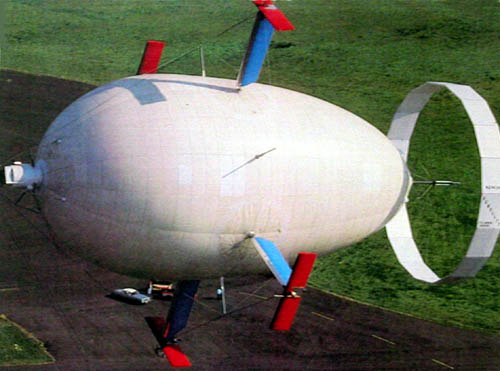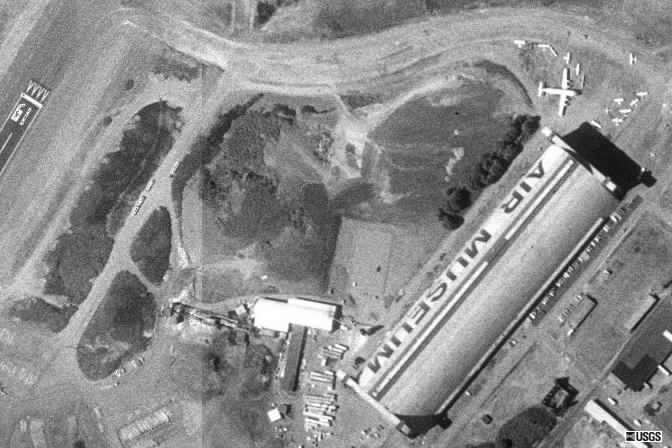The Cyclocrane
Today, let's take a chance. The University of Houston's College of Engineering presents this series about the machines that make our civilization run, and the people whose ingenuity created them.
I dropped into a used book store in the little town of Tillamook, Oregon. I told them about The Engines of Our Ingenuity and asked if they had any offbeat material in a dusty corner. "We don't have much here," they said, "but you should take a look in that big hangar just south of town." So I did.
"That big hangar" was an old WW-II garage for anti-submarine blimps. It was a quarter mile long. In it men were were building a machine that might have drifted in from outer space. It was called a CycloCrane -- a great floating crane, half airship, half helicopter. Its body was a fat blimp that rotated on a central shaft. Four adjustable airfoils, each shaped like the letter T, reached radially outward from its midsection -- up, down, left, and right. At the end of each was a propeller.
The weight and buoyancy of a normal blimp have to be balanced. You can't suddenly add a big load. But those rotating airfoils not only let the CycloCrane navigate and hover in one spot; they also overcome its huge buoyancy before it's loaded.
The CycloCrane is meant to fly into position, grasp as much as 35 tons of cargo, and then reverse the aerodynamic forces so they double the buoyancy. It's meant to take logs out of remote forests, to work on large construction sites, and generally to duplicate the functions of both a helicopter and a crane. It should be simpler and cheaper to run than a helicopter, and it will carry more load.
It all makes sense, but it's radical. Naturally, the work has been plagued with design problems. The company that developed it is in financial trouble. Beyond that, investors never have liked new technology. They want their money safe.
Yet stumbling across this new machine in the Oregon woods was pure delight. There was the old risk-taking, inventive dream that made America. I was granted a glimpse of the self-expressive beauty of a new idea -- and a good one -- riding somewhere beyond the reach of balance sheets.
It was like stepping into Boulton's lab in 1765, or looking at Carlson's first Xerox machine, or visiting Babbage in the shop that built his Analytical Engine. For technology to flourish, someone has to put his neck on the line. How many times have you seen America undertaking such risky business in your lifetime?
The CycloCrane's company might survive. It might fail. But I was deeply touched to find people still willing to gamble on the fruits of their inventive minds.
I'm John Lienhard, at the University of Houston, where we're interested in the way inventive minds work.
(Theme music)

Photo of the Cyclocrane in flight, courtesy of the Tillamook Air Museum
Besides looking over the actual CycloCrane, I used literature available in the offices of
AeroLift Inc.
4105 Blimp Blvd.
Tillamook, Oregon 97141
(503) 842-8891
FAX (503) 842-8897
to develop this episode. The inventors of the CycloCrane were Arthur J. Crimmins and Donald J. Doolittle and the CycloCrane engineering office was, at the time, in California:
AeroLift Inc.
17316 Edwards Road
Cerritos, California 90701
(213) 921-460
FAX (213) 802-8169
Since then, the project did fail, and "that big hanger just south of town" has been converted into a museum of which the CycloCrane now forms a major exhibit:

US satellite photo of the Air Museum which now displays the Cyclocrane